
(first posted 6/21/2018) The police vehicle. It’s something we’ve talked about here sporadically and while most people don’t want to encounter one under self-detrimental circumstances, they serve a highly beneficial purpose and are always welcome during times of distress.
A recent outtake by Edward Snitkoff discussing the 2020 Ford Explorer prompted thoughts about those atypical police offerings from times past. The police have used everything imaginable, but let’s focus on cars purpose built by the manufacturer (there is an exception or two) and aren’t the typical full-sized sedans that seemed to be the law enforcement stereotype until recently – although, there are a few full-sized sedans but by a brand you might not have anticipated.
To keep it all manageable, we’ll look at the time period of 1959 to roughly 1990 – truly the sweet spot for what we like around here. This list is not intended to be comprehensive or all-encompassing.

1959 and up Studebaker Marshal
Studebaker had been making police cars for a while, but their physical downsizing in 1959 gave new dimension to their offerings. The good folks at South Bend continued offering police vehicles until almost the bitter end, some of which could be had with optional supercharged Avanti engines.
The Lark based Marshal’s kinship to the Marshal from a few years earlier is unmistakable.
1961 and 1962 Chevrolet Corvair
Just because a car has a police package with various heavy duty components doesn’t mean it is meant for ground-pounding pursuit and patrol. In the case of the Corvair police package, it was advertised as being a car willing to tackle various miscellaneous duties.
Given Chevrolet also had a taxi package for the Corvair during these two years, a police package was hardly a stretch as the differences between the two would have primarily amounted to paint color and door decals.
From literature about it:
Big cities will like the Corvair’s maneuverability in traffic. Local sheriff’s offices will like the way Corvair handles a hundred-odd jobs quickly and willingly.
To say the Corvair police package was unsuccessful is a charitable way to put it.
It was, however, either successful or memorable enough to be made into a child’s toy by, among others, Ichiko Toys of Japan.
1962 and 1963 Chevy II
Available with the choice of a four or six-cylinder engine, the police Chevy II coincided with the release of the retail Chevy II. The GM Heritage Center shows the chassis and drivetrain was Option Code 599 for 1962 and nearly everything from seats to suspension hardware was heavy duty or reinforced.
The police Chevy II continued until 1964.
1961 to 1964 Chrysler Enforcer
Once upon a time, one hundred twenty-two inches was the magical wheelbase length for many law enforcement agencies. Other than the Newport, Chrysler had no other offering with this wheelbase length. Since the Newport was it, Chrysler Corporation made a bunch of bids with a Chrysler brand car, which was a first, and dubbed it “Enforcer”. From all accounts the word “Newport” didn’t appear on it anywhere.
As an aside, DeSoto offered similar in at least 1957. As the Newport could be viewed as the replacement for the DeSoto, it does make some degree of sense.
For 1961, the only power plant was a four-barrel 383 V8, an engine that was not available in any retail Chrysler. The Car Life article seen above would clock a 383 powered Enforcer (a two-barrel 361 was standard for the 1962 model) at a top speed of 131 mph with the blast to 100 mph taking 24.1 seconds.
Given the downsizing elsewhere at Chrysler in 1962, it’s easy to see why the Enforcer was reasonably popular. With Chrysler going back to a perceived full-sized C-body for 1965, the Enforcer was likely seen as redundant and was canceled.
1963 Rambler
This is one I stumbled upon when looking for other pictures but sure enough Rambler offered genuine police cars. They didn’t limit their efforts to 1963 only.
It all makes sense; Nash had been offering police cars for a while (or at least they did if you’ve ever seen episodes of Superman from the early 1950s) and the Rambler simply continued this offering, such as this 1957 model. It also bridged the gap from the 1950s Nash offerings to the 1970s AMC offerings discussed below.
Incidentally, they also built the “Rambulance”. It’s amazing what turned up while searching for pictures of other cars featured here.
1967 Oldsmobile Delmont 88
Breaking with their long standing relationship with Chrysler Corporation for a year, the California Highway Patrol used Oldsmobiles in 1967. All were reported to be powered by a 365 gross horsepower 425 cubic inch (7.0 liter) V8.

For a long time, the Patrol in California required its car to possess a minimum wheelbase of 122 inches and a base curb weight of 3,800 pounds. The Olds filled this role quite nicely but not well enough to entice the boys in blue to use them again in 1969 as they went back to Dodge.
1970 Mercury Montego
Watching the original Gone In 60 Seconds will yield a bumper crop of these Mercury cruisers. The Los Angeles police were likely the largest and highest profile user of these 429 (7.0 liter) powered cars.
Incidentally, information I found while researching this stated these Los Angeles cars were ordered without power steering. Navigating a big block car through town for 8 hours without the assistance of power steering sounds like a great upper body workout.

1971 and 1972 AMC Javelin
When AMC (formerly Rambler which was formerly Nash and Hudson) ramped up their police car efforts in the early 1970s, it wasn’t limited to the Matador and Ambassador. The Alabama State Police purchased 100 specifically prepared Javelins in both 1971 and 1972. All were powered by the 401 cubic inch AMC V8 and hooked to an automatic transmission.
So when California began using pony cars, they weren’t plowing new ground; Alabama had done so 8 years earlier.
1976 Dodge Dart and Plymouth Valiant
Despite being their last year on the market, Chrysler opted to offer an A38 (Mopar speak for police package) Dart and Valiant.
Available with the 225 slant six, 318, or 360 with dual exhaust, testing of these Daliants showed its performance was approaching Chevrolet’s police Nova – likely a prime motivator in Chrysler producing these. If memory serves, a periodic commenter here has mentioned their 1976 police Dart which had had its first life in or around Seattle.
1977 Ford Maverick
Like the Dart, a police specification Maverick was introduced for its last year of production. Complaints about the Maverick were so rampant Ford ceased production after making only 350 of them, leading to theories these may be the rarest Ford police cars ever. Such a Maverick sounds like this was not one of Ford’s better ideas.
While it is easy to find pictures of police outfitted Mavericks from all years, particularly in military use, Ford only offered them as such for one year.
1978 Mercury Marquis
Mercury had been offering cruisers on their full-sized cars for at least 20 years by this time, with states such as Indiana and Missouri taking frequent advantage of their bodacious-ness.
Yet by 1978 having a police cruiser with covered headlights and a brilliant red cloth interior just wasn’t the norm. This car was purchased new by the Missouri State Highway Patrol and was one of many they purchased that year. It is on display in a museum ten minutes from where I sit writing this.
As an aside, long ago I had a conversation with a Trooper who had once been assigned one of these Mercurys. He had just gotten fuel when he had a call that involved an extended chase. After apprehending the person, he realized he needed fuel again, so he checked his mileage. With his foot in the throttle during the chase, he had achieved 4 miles per gallon with his 460 (7.5 liter) powered Mercury.
1978 to 1980 Ford Fairmont and Mercury Zephyr
For the various resources I’ve used for this article, most of which have pictures of actual units during their service lives, the bulk of the Fairmonts appear to be found in western states. Is this indicative of anything? Likely not, although we at least know where some were used.
These tended to make a good deal of sense, especially if used in an urban area. Piloting one of these in a dense city would be easier to do than with the Mercury Marquis seen directly above.
1979 Buick LeSabre
With the preponderance of B-body Chevrolets used in police service, extending the package to the Buick wasn’t a big stretch. Powered by a 155 horsepower 350, testing by the Michigan State Police revealed acceleration to be lackadaisical with a blast to 100 mph taking 46.4 seconds – nearly twice that of the Chrysler Enforcer seen above.
These Buicks were used by the Missouri State Highway Patrol in 1979, along with the R-body Chrysler Newport. In the same testing in Michigan, it was found the 360 powered Newport made the same dash to 100 mph in 31 seconds.
While quite young at the time, I can remember these Buicks being in service.
1979 Chevrolet Camaro Z28
Due to the ongoing downsizing conflicting with the long-held dimension standards of the California Highway Patrol (the minimum wheelbase length of 122″ was held for a long time), a special vehicle study was conducted in 1979. Three Camaros were included in their mixture.
Axle gearing, brakes, and tires deviated from retail cars and all were powered by a 160 horsepower, four barrel 350 (5.7 liter) V8. Installation of police equipment, from lights to pushbars to the shotgun rack all posed unique challenges that were eventually overcome.
The results of the 18 month study were favorable for the Camaro, leading the Patrol to bid sport coupes for 1982. The Camaro Z28 was bid at $11,445 each; the Ford Mustang, powered by a 302 V8, was bid at $6,868.
They purchased 400 Mustangs.

1980 Chevrolet Citation
While they were all retail cars, the New York City Police did procure a number of 1980 Chevrolet Citations for patrol use. They were withdrawn from service within two months.
1980 and 1981 Mercury Marquis
Old habits die hard and Missouri had been purchasing Mercury patrol cars intermittently since the mid-1960s. That habit did not stop upon the full-sized Mercury being downsized for 1979.
Like the 1979 LeSabre, I remember when these were in service. There was also a series of public service announcements sponsored by KFVS, the CBS affiliate in Cape Girardeau, that featured Sgt. Joe Matthews and his downsized Mercury Marquis cruiser.
I vividly remember Sgt. Matthews, who appeared to be quite a formidable individual, politely reminding people to slow down and drive safely. While spoken in a very professional manner, one could easily read between the lines as Sgt. Matthews was really saying “Slow your ass down or we’ll make you regret the error of your ways.”
In the interest of full disclosure, my day-job is such that I have intermittent association with MSHP troopers, recently having had lunch with a group of lieutenants and the captain of a troop. They are a very dedicated and professional group of people.
1981 Chrysler LeBaron
While this was a one-year wonder M-body, providing an alternative to the M-body Dodge Diplomat, the few that were made took some high profile positions such as with New York City, the Nevada Highway Patrol, and the Wisconsin State Police.
They are so rare, it’s tough to find any decently sized picture of one. This one from Miami Beach, Florida, is the largest sized picture of an in-service LeBaron available.
Except for maybe this one – which I owned for a few years. It was originally from Florida.
Having a Chrysler name didn’t equate to it having a fancy interior.
1984 to 1986 Chevrolet Celebrity
Despite wearing Chevrolet’s “9C1” nomenclature for police vehicles, the Celebrity was intended for less vigorous, special service duties.
Powered by a 112 horsepower 2.8 liter V6 in 1984, the 9C1 Celebrity had a top speed of 110.2 mph as tested by the Michigan State Police. For comparison, the fastest full-size sedan they tested that year was the Plymouth Gran Fury whose four-barrel 318 pushed it to 121.4 mph.
Fuel injection was added for 1985 pushing the Celebrity’s top speed, again as tested by the Michigan State Police, to 116.1 mph – nearly two miles per hour faster than the 350 equipped Impala also tested that year – while getting 20.1 miles per gallon to the Impala’s 13.3.
As stated earlier, this list is not intended to be comprehensive or all-encompassing. There’s a lot to pick from and any attempt to harness everything about every Pontiac…
Buick (here from 1971), or…
Even Volvos used in the U.S. can get difficult. There has been a lot of availability of many different makes and models over the years.
But one thing is certain as the unusualness does make them all more memorable. And we didn’t even touch on wagons.



































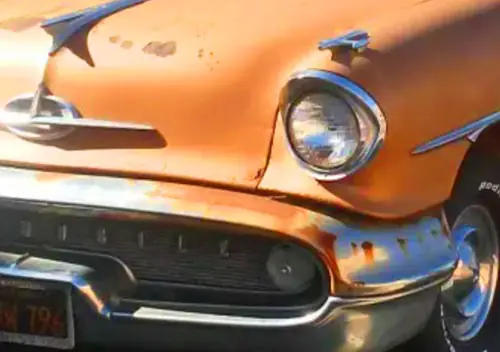
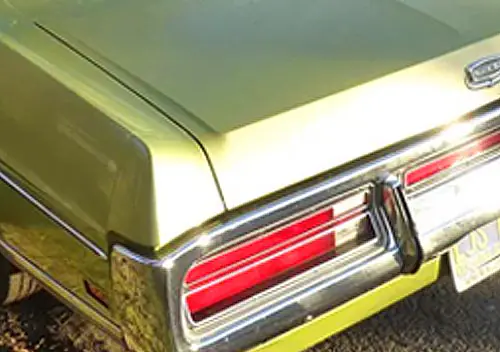
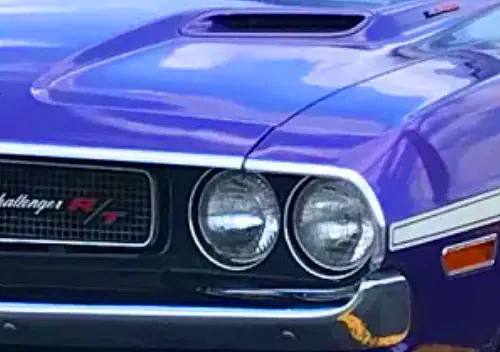

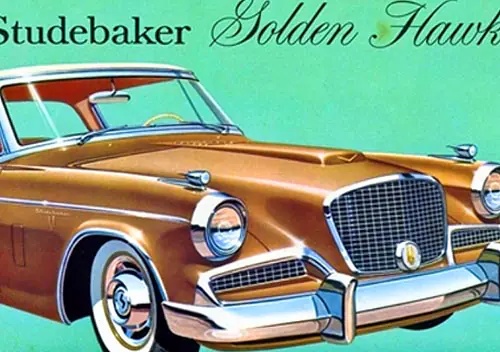
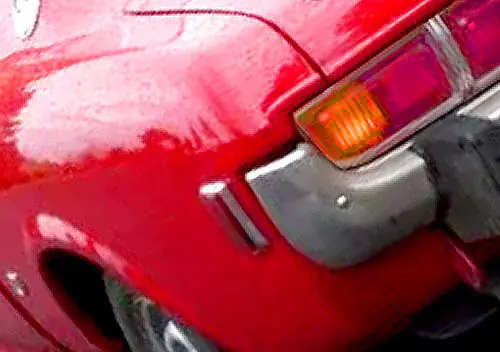
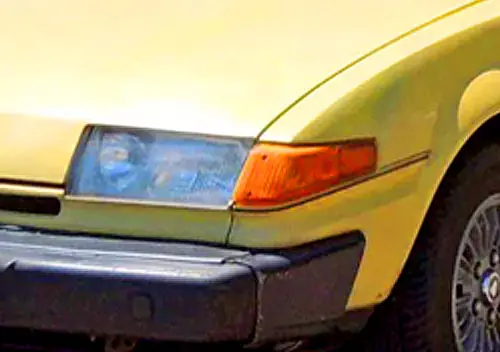
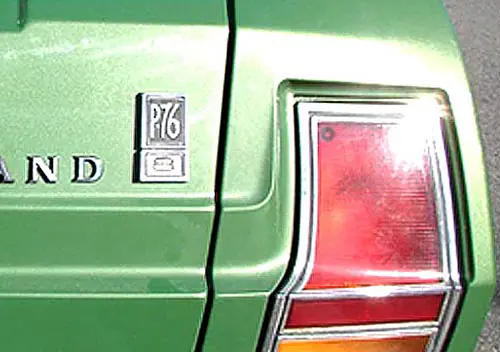
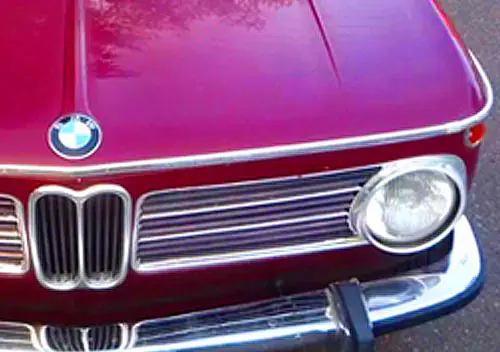
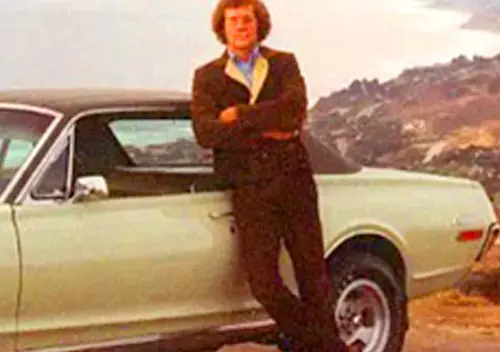
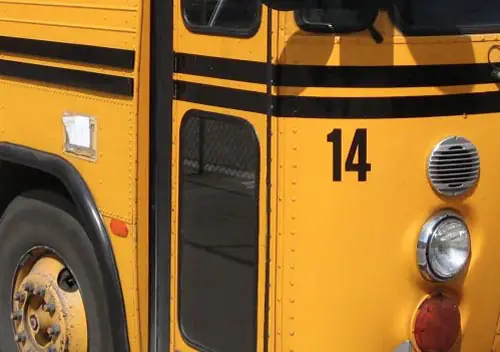
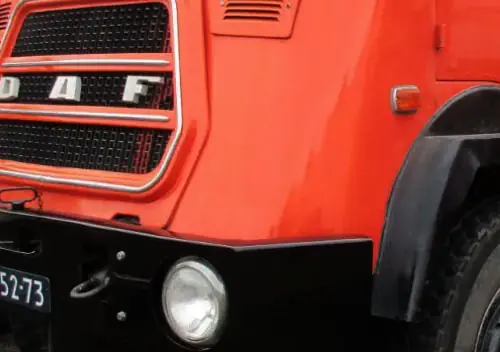
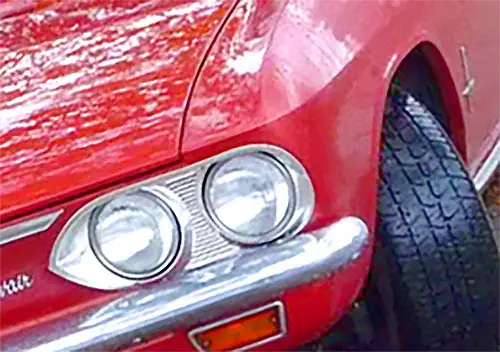
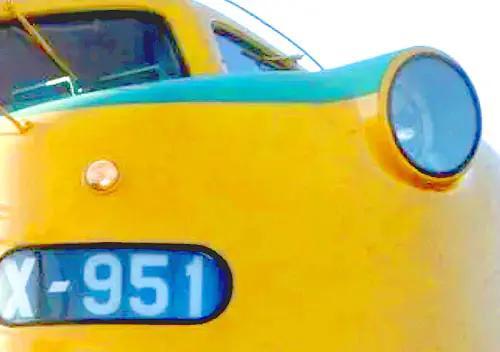
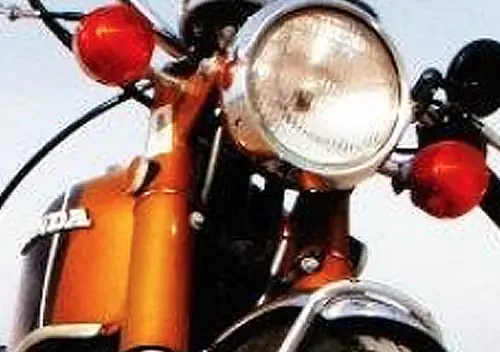
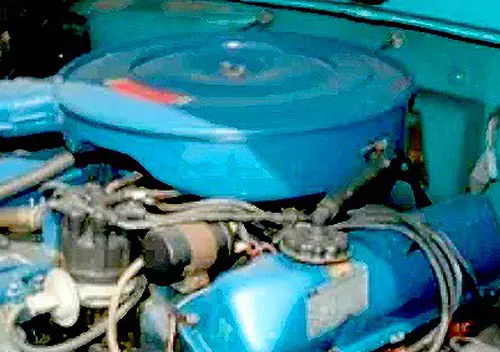
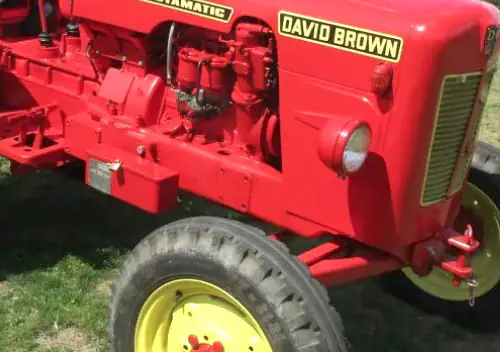
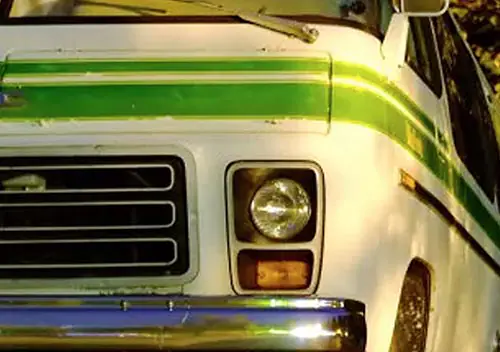

Some pretty cool police cars, always nice to get education.
I actually was aware of the 67 Olds 88 police car for a while. I came across a picture of one on the internet years ago and wondered what that was all about. I came across an article across Hemmings that described them in more detail. The guy they were interviewing, who was a historian on CHP history, basically said the Olds were one and done deals, having a terrible reputation amongst the CHP for a litany of reliability issues and performance defects. The CHP pretty much just stuck with Dodges until 1970, when they had another one and done deal with Mercury to make the Monterrey a patrol car, though I haven’t come across articles about how well it did, I’m guessing the fact it was another one and done deal may speak volumes as to how well the department liked them, and why they went back to Dodges in 1971 onwards.
https://www.hemmings.com/magazine/mus/2008/12/Reighn-Breaker—1967-Oldsmobile-B07/1736092.html
My understanding was that the CHP Olds and Merc were Ronald Reagan specials – as governor, he had put in a policy requiring state agencies to buy from someone other than their usual supplier at least once every 4 or 5 years.
Enjoyable article. I had a career in military law enforcement and have driven a few of these. The worst was the Fairmont – we had a derogatory word for them that I won’t use here, but let’s just say they were severely under-powered, felt cheap, and were poorly screwed together. A real penalty box…
I’m surprised you didn’t mention the early K cars – we had a few of them too…I’d rate them the same as the Fairmont.
I grew up at Canadian Forces Base Rockcliffe, where in 1974 they were using AMC Hornets for military police duties. Very similar to the attached pic, but all black. I never saw them doing more than patrol duty, except on one occasion when one was pursuing a souped up early 70s Chev Nova that was speeding on the base.
Great collection of pictures and information here. I’m love the Rambulance.
I can help crack the puzzle of one of these pictures — the Volvo from the City of Falls Church Police Department. Falls Church, located near me in Northern Virginia, is a small city that happens to contain a Volvo dealership. The dealer’s owner, Don Beyer, was very politically active, and exerted a great influence over the Falls Church City Council (while not a City elected official, he was active in party politics, eventually became Lt. Governor, and is now a US Congressman).
Anyway, it was due to his influence that Falls Church bought Volvos from his dealership to be police cruisers. He tried to market Volvo police cars to other jurisdictions in the area too, but never succeeded.
As the picture below shows, Falls Church used Volvo cruisers for many years — the inspection sticker here shows 1992, and I think that was near the end of their use.
I wonder if many of the other cities & towns that used police vehicles of unusual makes did so because of a powerful dealer located nearby? It would seem to explain a lot.
Thanks for the explanation of the Falls Church Police Volvo’s. I figured there had to be some link to city politics – either Volvo having a corporate presence there, or as you pointed out, an influential owner of a dealership.
The pieces now fall into place and it sounds somewhat familiar. The former owner of the Ford dealer here later became leader of the state senate and was just appointed Lt. Governor this week upon the resignation of our governor a few weeks ago.
I can’t help but wonder about Missouri’s decision to buy hidden-headlight Marquis wasn’t influenced by….something. But that would never happen, right?
Theory 1: the Mercury factory in St Louis
Theory 2: they sell cars at low mileage, currently 54,500. Good way to get a few extra dollars on the tail end although they rarely sell to the public. They used Buick’s and Chrysler also.
Theory 3: some combination of the first two.
South Carolina got a few different BMWs donated over the years after the plant opened outside Spartanburg.
SCHP E34
That one looks like an M5!
The police departments in Addison and Richardson, the suburban towns north of Dallas, had Volvo 246 for a few years in the 1980s. Richardson’s Volvo cars were one-time deal for six-month testing.
Addison loved them and was very disappointed when Volvo withdrew from the police cruiser market.
A very wealthy town within Dallas, Highland Park, leased a Mercedes-Benz 240D (W123) for police duty in 1983 or 1984. Why didn’t they choose quicker 280E is beyond me. The residents objected to the police officers cruising in the same cars they drove so it was, like Richardson Police, one-time thing.
Georgia state patrol were also gifted some bmw 3 series during the Atlanta Olympics in 1996
They could still make a Rambulance, only now the donor vehicle would be a Ram Promaster or 1500. Same company though! (sort of)
I’m trying to figure out the opposite around here – My city seems to be wanting to try to be a “buy local” and progressive kind of place and tries to boost local businesses etc but the most recent city vehicle purchase for the city maintenance department that I’ve noticed is a small van, in this case a Mercedes Metris. A vehicle that is not an American brand, is not built in this country, and the dealer for which is in the next city over. So pretty much a zero showing in the locality trifecta. Not that the Metris is necessarily a bad vehicle or a poor choice but I can’t see what it does that many other vehicles couldn’t, for example the slightly larger smallest/shortest version of the Promaster van or the smallest Transit. Most of the other common vehicle brands are sold within our city limits and the city seems to spread it around. But in this case it seems someone’s getting a big piece of pork from someone…
The US Metrises (sic?) are assembled at Mercedes plant in Charleston, SC.
https://mbvcharleston.com/
I can’t find any pictures online, but in the early 1980s the Dearborn MI police department had a few Lincoln Town Car and Continental Mark VI sedans supplied by Ford and equipped with full police livery. Also, in the late 1920s, some police departments had Lincoln phaetons to chase down gangsters and bootleggers.
You are correct; I’ve seen those early ’80s Town Cars liveried up also, but only in pictures. From what I can remember reading Ford supplied cars for component and endurance testing, the city got free cars, and everyone was happy.
I also discovered a one-off ’88 or so Thunderbird used by one of the southwestern states; like in Dearborn, it was for endurance testing.
Those black and white police cars look so iconic.
This is what British PC plod used for Panda cars in the 60’s, how the villains in Mk2 Jags must have laughed themselves silly, “Crikey it’s the Rozzers” holds no threat.
That huge sign on the roof must have lopped 10mph off the 80 mph top speed at least
More recent South Wales Police vehicles, the dayglow colour scheme does make them stand out
The old style bobbies on the beat have largely disappeared, they walk around looking like SWAT teams now but without the gun, looks really inappropriate in a gentile seaside town like Llandudno
2nd picture , can’t seem to load more than one at a time
I remember seeing a police Anglia here in Melbourne, Australia, back when I was a kid. Definitely light duties only!
One big factor influencing patrol car purchase decisions is the amount of money a department might have invested in equipment such as cages, radio mounts, push bars & such. Usually these only will fit the body style for which they were originally built. Most departments with larger fleets really like to stay with the same body style to maximize the use of that investment. Fleet managers even get upset when their favorite make of car makes changes that obsolete all their accessories.
As an aside, I had 12 of those police Mavericks as MP cars in the late 70s. They were being replaced by AMC Concords. The fact the Concord was considered a great improvement speaks volumes of how bad the Mavericks really were. As an officer, I didn’t do routine patrols so my assigned car never accumulated miles and was not rotated with other cars. My MP Plymouth Satellite might have been older than the road cars, but it was soooo much better than either the Mavericks or the Concords.
I’m curious, what was so bad about the Mavericks? Not that they sound especially compelling as a police package, but I’m curious in what ways they were bad?
I’m just guessing from my experiences with my family’s ‘74 Maverick, but some things that immediately come to mind are poor visibility, a cramped interior (rear headroom is awful), and a small, awkwardly shaped trunk/boot.
I’m sure all those were major issues, plus Wikipedia notes the police components weren’t “sufficiently upgraded.” So, durability problems on top of a platform not optimized for the job, and you’ve got trouble.
Your taxing my memory for details now. Here’s what I can remember:
The motor pool had to position the Maverick seat divider so that the front seat couldn’t be pushed too far back. MPs tended to be tall and that was probably the #1 complaint.
Mavericks had a narrow bench front seat that seemed to position the driver side seat belt buckle in a way that either pushed a right hander’s holster to an uncomfortable position or caught on the holster when exiting the car. The Concords had split front seats and this was one thing the MPs really liked over the Mavericks. That and if you had a short partner for a driver, the passenger MP could still push the seat further back.
The last thing I remember was that the Mavericks were really prone to pump catch. I took my EVOT (Emergency Vehicle Operations & Training) course in a Maverick when I arrived on base.
What our instructor called pump catch was when demand for power steering hydraulic assist exceeded the pump output capability. When that happened, you’d momentarily lose all power assist until the pump caught up. You could still steer when pump catch hit, but the transition between power assist and manual steering was abrupt and without warning. Our instructor purposely set up the EVOT obstacle course to induce pump catch so we could feel what happened to the car when it occurred. I knocked over a lot of cones learning.
I never drove the course in a Concord, but others who did told me pump catch was far less frequent than in a Maverick. I took the Satellite through the course for a refresher once and never got any pump catch. I never had a pursuit so I can’t speak under real world conditions.
There were other beefs about the Mavericks too, but those are the main ones I remember.
Presumably inspired by Robocop, Ford offered a police package on the 1st gen Taurus.
This was a great piece, Jason! You’ve got me curious about what strange police cars came after 1990… I’d love to see a Part Two. Off the top of my head, I recall there being police Luminas, Intrepids and Saab 9-5s.
My resources were primarily published in the mid-90s, so there is a big blank spot for some time periods. However, one I found that was actually tested was a Suzuki Samarai. The overall variety did tend to dwindle considerably, with a fair number of what we’ve seen here driven by fuel prices / consumption.
What was the reasoning behind the 122 inch wheelbase requirement?
It was considered a sweet spot between ride and handling. I’m still trying to wrap my brain around that one.
I’m also guessing they needed lots of rear seat space to fit the partition.
There was no partition back then on CHP cars. Being a highway patrol, the CHP didn’t exactly get involved in lots of serious criminal activity.
I doubt hardly any police cars had partitions back then. I don’t remember seeing them.
As to the 122″ wb and 3800lbs minimum weight, it obviously reflects the ridiculous “road hugging weight” theory that was still prevalent at the time. I’m surprised they didn’t mandate fins in order to increase stability at high speed.
Interesting to see the Delmont 88 used by the California Highway Patrol.
Amazing what you learn on this site. The only other use of Oldsmobiles that I was aware of was the B01 police package for the F-85, which I read (or perhaps assumed) was put together primarily to allow the Lansing Police to use its hometown brand. Of course, parts used in that police package eventually made their way into another package, B09, better known as the 442.
Check out the last picture in the link. Perhaps Oldsmobile only sold three of them, but they at least appeared to have one.
https://www.curbsideclassic.com/curbside-classics-american/curbside-classic-1978-oldsmobile-cutlass-4-4-2-esmerelda-had-more-sympathy-for-quasimodo-than-did-the-general/
Spring Hill, TN at one time had some Saturn SL1s in use, featured in Saturn magazine ads. Bad guys needn’t fear the SOHC 1.9.
I don’t think you can beat this
Yes… I think I can 🙂 I remember these from when I was a kid.
Sacre bleu
Forget about high-speed pursuits, but you can’t beat the cushy ride…and what gas mileage!
If you watch (and listen) at the 10 second mark of this music video from 1981, you’ll see (and hear) the R5 police cars used by Paris(?) police.
This song is also credited as the first French rap song.
I grew up in Burlington, Washington-La Conner is nearby. I remember the Le Car La Conner PD vehicles, too. I always thought they should have marked them ‘Le Cop’…
The village I was a kid in in Germany had a dark green Polizei Bug into the late 70’s. Eventually replaced by an Audi 80.
We had some Jeep Cherokees when I first got into law enforcement in the mid 1990s and with the HO 4.0 inline six, they could easily keep up with the 9C1 Caprices we had at the time, until you had to brake or corner.
I remember some leftover K-cars that were still in use as admin cars at that time and they must have been abysmal as police cars. FWD does not work for police cars.
Jeep Cherokee was the only official Chrysler poluce package in the mid-1990s. There waxn’t one for the Dynasty or the first-generstion LH (Intrepid).
Sam and Max, freelance police, also had a DeSoto.
Aside from some of the aforementioned cars, my favorite “weird” standard duty (Not DARE or seized) police cars are the Aspen SAABs (they ran 900s, 9000s and 9-5s at least) and later Volvo XC90’s
9000
900
Those are often found in Aspen and Vail, the ski towns in Colorado.
Aspen Saabs …
… newly in service (photos from July 1979) …
… and a well-used Sheriff’s car.
Maine State Police used to buy unmarked Crown Victoria’s that had Grand Marquis tail lights and a Mercury trunk badge. They’d poop along in the first Lane of I95 and the unsuspecting would blow by them thinking that they were passing old Grandma. One cop told me that they would sometimes put an afghan in the back window to really complete the look.
The afghan-in-the-window trick is great! Too bad that all happened in the pre-dashcam era.
I just completed a trip from New Mexico to Anaheim, CA (Disneyland) and back. AZ state police are stepping up their game. I saw a Charger that was almost a flat grey and they had slapped cheap plastic wheel covers on the steelies. Only identifying mark was the black push bar.
I wouldn’t have noticed except for they had it parked in the median.
And Vail still runs Volvo XC90’s. The last time I took I70, they were using these for speed enforcement on the highway, very sneaky….
Also Oklahoma experimented with S70 & V70 Highway Patrol cars in the early 2000s. I saw one of the V70s in a high speed pursuit once, still the fastest I’ve ever seen a police officer drive.
OHP S70
The Rambulance is cool
I recall reading about an armored 1937 Studebaker that remained in reserve status into the 1980s.
And this proves that Indiana had more than just Studebaker police cars at one time. A little looking indicates that the Indiana State Police had been purely a motorcycle force until they went to cars in 1935, when the first choice was Auburn phaetons. The Cords were purchased in 1936. I think we saw one of those in the NATMUS museum in Auburn in 2014.
“I recall reading about an armored 1937 Studebaker that remained in reserve status into the 1980s.”
https://www.hemmings.com/blog/2016/09/07/worlds-longest-serving-cop-car-could-be-cantons-bulletproof-studebaker/
Yes, I saw that. A really great story.
This is one of the more unusual ones I’ve come across – 1967 Ambassador 880 2-door “sports sedan” getting its OPP (Ontario Provincial Police) decals. The OPP used 2-door sedans almost exclusively until they were no longer available.
That Chrysler Enforcer sure is intimidating looking. 1963 Rambler cop car not so much 😛
In the book Cars I Have Owned and Other Financial Disasters author Glenn E. Thompson tells of a local police department’s experience with 1971 AMC Matador police cars.
Some local teenagers tried to outrun the “Rambler” police car because it was…a Rambler (or, by this point, an AMC product). The local police department wasn’t too happy about the chases that resulted.
The police department invited local teenagers to a demonstration of the Matador’s performance capabilities. Problem solved.
More Canadian content – RCMP 1970 Pontiac Strato-Chief with Chevy 454 underhood.
Another shot…
I see you’ve been to the Canadian Poncho site too. 454’s were so rare in the ’70 that I’d never seen one before seeing this image.
The Oshawa Police department, could only buy Oshawa built cars..I distinctly remember fully marked 67 Strato -Chiefs . Equipped with a 283 and a 2 speed Powerglide .
I photographed this ’70 Laurentian 454 in Oshawa in 2001.
I remember the commercial featuring a VW Rabbit in police livery running a speed trap in the South. I found an article about that commercial on the car site with a J in it. It was a 1980. I never saw one in actual use, but seemed more appropriate for rent-a-cop local security and maybe college campus use.
Here in the 1970s in suburban ATL, the county preference seemed to be mostly Dodge Diplomats doing patrol; a classmate of mine in high school told me that the county liked Plymouth Satellites for their big and fast car.
Can’t outrun a Motorola. I’d like to see a feature on specialized highway interceptors.
I remember being pulled over by one of those ’81 LeBarons…in upstate NY circa 1982.
I think this may be my favorite list of all time here at CC. I want more! Being the wagon fan that I am, I’d love to see more of the manufacturers ad’s for them. That was my favorite part of this article, and I’m saving the photos used here to hopefully print off and make some garage posters and pictures out of. While I’m not a police officer, I’ve been in public safety (EMS and rescue) for 17 years and emergency vehicles are my thing. Here’s a picture of my last and favorite take home vehicle.
I seem to recall a Renault LeCar in an advertisement back in the 70s…
I came across this recently while doing some other research and found it interesting enough to save.
This is a 1972 bid list from my town for an order of four new police cruisers. They solicited bids from 6 local dealers (2 Ford dealers, 2 Chrysler dealers, 1 Dodge and 1 AMC). I have no idea why no Chevy dealers were included on the list.
A Ford dealer came in with the lowest bid, and they got the contract, though the City did pony up an extra $100 for each cruiser for “electrically operated front windows.”
My home town of Canton, Ohio had an armored 1936 or 1937 Studebaker up until at least the 1970’s It was used in hostage negotiations. I don’t know how effectively.
The local Sheriff had full size 1961 or 1962 Fords with 406? ci engines and three on the tree. There are a lot of hills in that area, and the stick shift was not too popular.
“We have the garage surrounded, give yourselves up now, or we will send in the Studebaker!”
Young hipster criminals: “The what?!”
1955 Commander Ambulet
That armored 37 Studebaker is very well documented online. Hemmings did a very nice piece on it a couple of years ago. https://www.hemmings.com/blog/2016/09/07/worlds-longest-serving-cop-car-could-be-cantons-bulletproof-studebaker/
Aussie cops had Studebakers in the 60s they had a V8 when nothing local had one.
Vail Colorado also used Saabs. Our local emergency services in Castle Pines Village Colorado switched from Ford Explorers to Honda Pilots after reliability issues (primarily transmissions). Our son is a Sheriff in LaPlata County Colorado (Durango) where Chevy Tahoes are the vehicles of choice.
Wasn’t the Dodge Custom 880 on the same chassis as the Chrysler Newport? If so, it would seem to have been a perfect candidate for a cop-car, what with it’s quite dowdy appearance.
I think the 880 got some police business in 63 and 64, but it was a late mid-year entry for 1962 and likely missed all of the police fleet orders. Now why Chrysler was offering the Enforcer in 1961 when the big Dodge was still around is another mystery.
Toronto Metro Police employed a Pinto. It was used by the Summons Bureau.
Ontario Provincial Police used the early Bronco.
Oh, now that Pinto’s just embarrassing. Sheesh.
I guess they used it for checking parking violations. There was also once some Chevettes and American Ford Escort as police cars.
https://web.archive.org/web/20030808233527/http://www.copcar.com/mo0300.htm
I saw on IMCDB, then they used Toyota Corolla as cop car in the South African drama movie Stander based on the real-life ex-cop turned bank robber André Stander who robbed various banks in Johannesburg. https://www.imcdb.org/vehicle_193352-Toyota-Corolla-E70-1982.html
But in real life, did they really used Corollas as cop cars?
In the Hemmings article about the ’67 Olds CHP cars, the front fender and bumper “pontoons” kept getting dented, so they stopped repairing them.
I’m thinking some fleet manager thought, “give the highway patrol some luxury, let’s get Oldsmobiles!
I grew up in Seattle, and their police department definitely did use the Dart back in the 70s (and it wasn’t a subfleet or evaluation model).
That is a very interesting photo, for it shows a 1974 Dart—two years before Chrysler (officially?) offered cop-spec A-bodies in the United States.
Seattle’s 1974 & 1975 were regular retail Darts (probably with ‘creative’ use of the option sheet). Note the interior in this 1974-definitely not a low-line interior.
I remember an article in the Seattle Post-Intelligencer in 1979 (ish) about an SPD officer lamenting that his favorite SPD Dart (still in the fleet) was totaled in an accident. He said it was one of the few that had bucket seats and was way more comfortable than the bench seat most of them had.
The police department in my small southeast Ohio hometown used a colonnade Pontiac LeMans sedan back in the ‘70s.
My town (small suburb north of Seattle) had a colonnade LeMans as an unmarked police car. The police department was notorious for running brutal speed traps, so the locals all knew the blue Pontiac was a cop car. I still remember getting stopped for a burned out tail light in my Manta. The officer was thoughtful (sarcasm intended) enough to provide me an escort home with all of the emergency lights running.
The Pontiac Le Msns Collonnade sedan enjoyed a brief fling at the police car business in thd mid-late 1970s… and not only on Smokey and the Bsndit.
My mother’s home town, Paducah, Kentucky, used Oldsmobile police cars for several years in the sixties and early seventies. I don’t know this for sure, but having grown up in Kentucky and knowing how government functions there, I suspect that somebody important in city government owned the Olds dealership in town. In any case it was unusual to see an Oldsmobile decked out with a light bar and all the other equipment used by the police.
I still wonder if there any boxy or whale Caprice 9C1s still in service or if there any boxy or aero Crown Vics still in service?
The oldest police cars I’ve seen in service lately are the aero Crown Vics and early Dodge Charger sedans as well as last generation Impalas.
Idaho Springs Colorado had a 1994 Chevrolet Caprice 9C1 in service as recently as 2011. I have not bothered to call recently to see if it is still in service.
It would be 24 years old today. Would be amazing if still in service.
Grand article! But what’s this, no mention of the 1982 Plymouth Reliant-K police package car? (No, I’m not joking or making it up…)
I saw one picture of the Aries/Reliant police package at
http://fr.autofocus.ca/galeries/surete-du-quebec-les-vieilles-voitures-de-police
showing the colours of the Surêté du Québec(Quebec Provincial Police) from the era.
There was some internal debate about including the K-car. It just seems to me like it’s the unusual one that many know about.
But, yeah, they made them for quite a few years.
Yes, Skokie, IL had at least 6 K cops, mabe as many as 8, the rest of the fleet was Dippys and GFs.
While I have never seen one, Buick offered a police package for the 62 and 63 Special. I have the factory shop manual for the 62,and it is amazing what heavy duty parts they came with, including larger radiators for the aluminum V8
They probably all should’ve had it.
Early 1960s Pontiac used by the RCMP.
I’d love to know the story behind this:
I’ve seen Nivas used as police cars in former-Eastern-Bloc places, but Canada?!? Yeah, there has to be a story behind it.
My university uses a W211 Mercedes E-Class as a police car…yes, I’m in the US.
In Quinn Martin shows (The Fugitive, Dan August, the Invaders, Cannon, The FBI, Barnaby Jones, Streets of San Francisco) we saw mainly full-size Galaxie/LTD as police cars while the Fairlane is undercover/detective car in Dragnet ’67 (and its spin-off Torino was featured in Starsky & Hutch), there’s a photo of a 1966 Fairlane used as patrol car.https://www.flickr.com/photos/74459232@N00/33195164671
And if you like the Matchbox version. 😉
http://flickriver.com/photos/luchiki1/16165413791/
South Hampton, NH, had a 1985 Audi 4000 quattro. I recall reading a featurette on it in either Road and Track or Car and Driver back in the day…
My grandpa was a Missouri highway patrolman from 1976-2002, stationed northeast of Kansas City. Was a Grundy County deputy for a few years prior. MSHP used a couple St. Regis squad cars in addition to the Newport (a cousin to the St. Regis), Marquis and LeSabre, and I think there were a several Impalas too, based on the photos I’ve seen of him in the force.
He’s actually in the process of restoring a St. Regis. It’s a nostalgic thing for him since he was issued one at some point in time and those cars are so rare (the St. Regis is in addition to having fully restored a ’77 Fury and a ’74 Dart). In addition to his classic iron, he’s got a 2009 Challenger 5.7L Hemi and a 2006 Ram 2500 Cummins turbo diesel, and my grandma, who apparently came from a die-hard Ford family, has a 2012 Chrysler 200, just like I do (mine’s a 2013).
My grandpa is a Mopar diehard but has said that the Crown Victorias that were issued near his retirement impressed him–surprised him, actually–and this is coming from a guy who detests FoMoCo cars to this day (as well as imports and to a lesser extent, GM). I have to say his allegiance to Mopar sort of rubbed off on me.
I wonder what my grandpa would think about the EcoBoost Explorers that are so prevalent. I don’t have the impression that they are nearly as durable as a traditional RWD from any member of the Big 3, but I guess police cars are switched out a lot quicker nowadays so they’ll never really find out.
I don’t know about cars being switched out much quicker nowadays. I remember when my county would retire them at 50-60K and now they keep them until 100-110K.
So far the Interceptor Utility is about on par with the Caprice and Charger in lack of durability compared to the Crown Vic and Tahoe.
The patrol here is swapping cars out at 54,500 miles as per their website and what their garage superintendent has told me.
No doubt it varies greatly by department as many departments nationwide are buying these 54,500 miles cars for themselves. It’s not unusual to see a convoy of a few Chargers, Explorers, Taurii, etc. leaving town followed by a marked patrol car from some faraway locale.
The City of Indianapolis, on the other hand, is still running quite a few Crown Victorias. Our last couple of mayors have been able to squeeze a little bit of copper juice out of a penny. You know they are getting old when you start seeing the rust bubbling out over the front fender wheel wells.
Nobody’s brought up the Camry (literally!) of police cars yet! In 1990, the California Highway Patrol tested a few V6 Camrys for freeway duty – I’ve only ever seen one in the metal, and it was light blue and white as opposed to black and white.
This one with state-manufactured push bars:
Wow, they almost look like the all-trac models, the ride height looks ever so slightly higher.
I’ve also seen Volvo 850 Turbo Wagons which were being evaluated on the I-5 Grapevine as well as Iroc-Z’s, usually in all white, which were semi-common in parts of the state.
Wow, just that cover pic alone was a major sugar rush. What a great read; I’ve started this twice before getting through it. This is dense with such fantastic images. That ad for the Chrysler Enforcer. Javelin. Fusey wagon at the end! But for me, winner is 1971 Buick. If you have a wagon in police uniform…
My small city used a Studebaker Commander in 1951 with a red light mounted in place of the plastic nose cone. First year for the new OHV V-8. In 1962 we had several V-8 Lark patrol cars including at least one 4 door wagon. Lots of narrow streets no significant long open roads, the Larks lasted quite a while. Had several new car dealers here including Chevrolet, Ford, Studebaker. In the 70’s we had a Buick dealer, Buick Le Sabre Police car with factory blue metallic paint. The Larks had factory green metallic.
There were 4 cylinder K cars built with turbochargers tested by Wayne Co. Sheriff Dept. in Michigan. Speed was reportedly at 150 mph.. The cars size and instability, not to mention being front wheel drive killed the test. There were also some Ford Pintos used by a few department. Some departments used AMC Matador with the 401. Lansing used Oldsmobile, Pontiac used Pontiac, Flint used Buick… When I was getting bidding documents I was pressured to purchase locally. The local dealers could not come close to State of Michigan negotiated bid prices. I presented the documentation to city council with my recommendation for the state bid. They could not justify local purchase with a cost difference of almost $10,000.
I retired from Ford Engineering, Dearborn, Michigan. I recall Ford giving the Dearborn Police Department about 34 Lincoln Town Cars around 1986, lightly modified for patrol. While it was a publicity stunt, the rationale was to prove how tough the cars were. But my searches on the internet have failed to find that history. If anyone can find that history, I’d appreciate sharing.
I have heard that the RCMP used panther body 1979 to 1981 Mercury Marquis Meteors.
This was a plain jane trim base model only sold in Canada to the public, plainer then the plainest Mercury Marquis of those 3 years in the USA.
They had a P71 cop car version of these Mercury Marquis Meteors. They had the heavy duty cop suspension with stabilizer bars. They had the police steel rims and wheel studs. They all had 351 Windsor V8s, transmission and power steering coolers. Cop duty radiator. Rubber flooring and plain cop interior with reading light between the sun vizors.
Since the Fords LTDs had a ribbon speedo with black background and Mercurys had a square speedo with a white background, nevertheless the RCMP version of these Marquis had the 240 KPH, 140 MPH markings like the Ford cop cars had as opposed to the civilian versions with 180 KPH, 110 MPH markings. These cars had no wheel well chrome moldings nor a chrome rocker molding that the Ford cop cars had.
Yes , the OPP had a few of those Mercury Marquis Meteor .
I forgot to add that these Mercury Marquis Meteors had dual exhaust too.
A co-worker in the early 1990s owned one of these ex RCMP Mercury Marquis Meteors.
A Rambulance? Ruh-roh, Rhaggy!
I remember RCMP IROC Camaros on the hi way in the early to mid nineties in my area
In my neck of the woods in Maryland in the late ’60s through ’80s, cops used almost exclusively big or mid-sized American cars from lowest-priced brands, meaning Fords, Plymouths (occasionaly Dodges or even Chryslers when a Plymouth version wasn’t available), or Chevrolets. AMC Ambassidors and Matadors were popular until they went away. Smaller cars were rare; the AMC Concord that issued me my first speeding ticket is the only Concord/et.al. cop car I’ve ever seen. I was born too late to see Stude police cruisers; the Martial was an Econ-O-Miler taxicab without the four-inch wheelbase extension for backseat riders. I did see some Studebaker Zip Vans delivering mail. For a few years in the early ’80s they used Olds 88s because the transmissions had become too weak on Chevys or something. No SUVs until 1997; it would have been interesting if they used SJ Wagoneers and Cherokees in the ”60s and ’70s now that police SUVs seem normal. We didn’t get the Fox Mustang cop cars but why didn’t Ford just put the 5.0 V8 and other upgraded parts into a four-door Fox body like the Fairmont, Granada, or LTD? (not unlike they later did with the civilian LTD LX). Also no cars from foreign-based manufacturers even now (unless you count Stellantis American-rooted cars).
An interesting variety. I remember the CHP Oldsmobiles and the Mercuries that came soon after; as a kid I thought it weird that they would use a “premium” brand instead of Chevy or Ford. In the late ‘70’s when I moved to Fremont, California, at the time home of a GM plant, the city PD used Colonnade Pontiacs which again seemed odd; why not Malibu’s? As for the pony cars, a big deal with the CHP Mustangs were that they were manual transmission. I chatted with a woman training officer at a sports car race who told me that a lot of the younger guys didn’t know how to drive a stick. This in the early ‘80s. When these Mustangs were common in CHP duty, the city of San Jose also got a few, but I don’t know if they were stick or automatic. The all-white CHP 3rd gen Camaro’s weren’t a common sight, and when I saw them they were always on rural freeways.
On recent travels out of the US, and watching a lot of European TV shows, I’ve noticed many Kia and Skoda police cars. In Mexico I saw only Chargers. When I travelled to Taiwan a lot in the late ‘9-‘s and early 2000’s, the highway patrol cars were an eclectic variety of Ford-badged Mazda 626’es, BMW 530i’s, and even Alfa 164’s.
In my neck of the woods in Maryland in the late ’60s through ’80s, cops used almost exclusively big or mid-sized American cars from lowest-priced brands, meaning Fords, Plymouths (occasionaly Dodges or even Chryslers when a Plymouth version wasn’t available), or Chevrolets. AMC Ambassidors and Matadors were popular until they went away. Smaller cars were rare; the AMC Concord that issued me my first speeding ticket is the only Concord/et. a. cop car I’ve ever seen.
I Idon’t remember seeing police SUVs until 1997. ‘50-79s SJ Jeep Wagoneers and Cherokees would have been interesting. Stude Marshals were Econ-o Miler taxicabs without the 4” wheelbase extension for extra rear seat room. These were long gone by the time I can remember, though there were still a few Studebake Ziip Vans delivering mail. I recall in the early ‘80s cops switched to Olds 88s because the transmissions Chevy was puttin into Impalas was too feeble. All police cars to this day seem to be from traditional American manufacturers (if you include Stellantis); not a Toyota or Honda to be found.
CC Effect… on the way to work this morning on I-71 South in Columbus, Ohio I was passed by a replica 1974 era big Dodge in Ohio State Patrol livery. Complete with a red popcorn popper style light on top! This would’ve been about 2 or 3 exits north of the OSP headquarters, so I figure he was on his way to some historical function there.
A Corvair police car? Really?
Ontario Provincial Police Bombardier B12. Beautiful mittens and mukluks. And nice snowshoes.
OPP checkpoint for 1972 Millhaven Maximum Security Prison break. I didn’t know the OPP were still using two doors this late.
Montreal Police Chevy Citation.
Weirdly optioned! The full-luxe wheelcovers and white stripe tires suggest it was pulled off the dealer’s lot but the silver rather than matching spoiler and bumper fillers suggest it was ordered to spec in a special fleet color rather than repainted locally – the paint shop would’ve left them in place and not cared if the blue flaked off in service!
Excellent observations. Does seem to have contradictory packaging. Do not recall seeing these at all in Montreal, at the time. Like New York, they may have had an especially limited service run.
Quebec Provincial Police 1982 Fairmont Futura.
Back in the early 1980’s I ran deliveries out on Sanibel Island. They were using both Fairmonts and Reliant K cars.
They each had a bumper sticker that read
If you’re in a hurry, you don’t belong on Sanibel!
I wonder if that cut down on the pursuits?!!
Loved the Camaro.
So many cool cop cars ! .
Last weekend I passed a 1956 Chevy four door in L.A.P.D. livery on the Northbound Harbor Freeway………
BMW gave the L.A.P.D. two (IIRC) tiny little panda cars that were electric .
Cops flat refused to drive them so they came to the Supply Dept. where the ladies were supposed to drive them to lunch etc., they still didn’t get much use .
-Nate
LOL compared to what our police were issued all those are rocket ships, my great uncle was in the NZ police joining just after WW2 they gave him a 46 Ford coupe flathead Mercury engine like all NZ post war US Fords, replaced by a MK1 Zephyr which wasnt faster but stayed on the road better replaced by a 58 MK2 Zephyr he bought when it was retired, a MK2 in good tune will break 90mph indicated but not in reality, but its hard to outrun the RT.
Last time I was pulled over 5 or 6 years ago the sheriff deputy was driving a Dodge Durango. Never seen that one until then, but I think Williamson county sheriff, Franklin and Brentwood PD have a few.
The oddball one now days is Metro Nashville PD and their Ford Taurus. Almost every other agency has moved onto the Explorer. And those Tauruses have some age on them now, I think its been 3 or 4 years since Ford turned out the lights on its passenger car division.
You forgot to include that Checker in your listing. I understand that the Chicago Police Department used them for a short while.
wisconsin has a highway patrol, not a state police.
What a fascinating look at the quirky side of automotive history! I had no idea that some of these unusual vehicles were part of police fleets. The unique choices really reflect the times and culture in which they were used. Thanks for sharing these great stories!